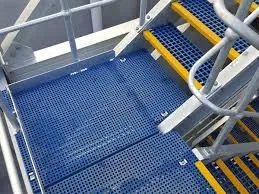
-
 Afrikaans
Afrikaans -
 Albanian
Albanian -
 Amharic
Amharic -
 Arabic
Arabic -
 Armenian
Armenian -
 Azerbaijani
Azerbaijani -
 Basque
Basque -
 Belarusian
Belarusian -
 Bengali
Bengali -
 Bosnian
Bosnian -
 Bulgarian
Bulgarian -
 Catalan
Catalan -
 Cebuano
Cebuano -
 China
China -
 China (Taiwan)
China (Taiwan) -
 Corsican
Corsican -
 Croatian
Croatian -
 Czech
Czech -
 Danish
Danish -
 Dutch
Dutch -
 English
English -
 Esperanto
Esperanto -
 Estonian
Estonian -
 Finnish
Finnish -
 French
French -
 Frisian
Frisian -
 Galician
Galician -
 Georgian
Georgian -
 German
German -
 Greek
Greek -
 Gujarati
Gujarati -
 Haitian Creole
Haitian Creole -
 hausa
hausa -
 hawaiian
hawaiian -
 Hebrew
Hebrew -
 Hindi
Hindi -
 Miao
Miao -
 Hungarian
Hungarian -
 Icelandic
Icelandic -
 igbo
igbo -
 Indonesian
Indonesian -
 irish
irish -
 Italian
Italian -
 Japanese
Japanese -
 Javanese
Javanese -
 Kannada
Kannada -
 kazakh
kazakh -
 Khmer
Khmer -
 Rwandese
Rwandese -
 Korean
Korean -
 Kurdish
Kurdish -
 Kyrgyz
Kyrgyz -
 Lao
Lao -
 Latin
Latin -
 Latvian
Latvian -
 Lithuanian
Lithuanian -
 Luxembourgish
Luxembourgish -
 Macedonian
Macedonian -
 Malgashi
Malgashi -
 Malay
Malay -
 Malayalam
Malayalam -
 Maltese
Maltese -
 Maori
Maori -
 Marathi
Marathi -
 Mongolian
Mongolian -
 Myanmar
Myanmar -
 Nepali
Nepali -
 Norwegian
Norwegian -
 Norwegian
Norwegian -
 Occitan
Occitan -
 Pashto
Pashto -
 Persian
Persian -
 Polish
Polish -
 Portuguese
Portuguese -
 Punjabi
Punjabi -
 Romanian
Romanian -
 Russian
Russian -
 Samoan
Samoan -
 Scottish Gaelic
Scottish Gaelic -
 Serbian
Serbian -
 Sesotho
Sesotho -
 Shona
Shona -
 Sindhi
Sindhi -
 Sinhala
Sinhala -
 Slovak
Slovak -
 Slovenian
Slovenian -
 Somali
Somali -
 Spanish
Spanish -
 Sundanese
Sundanese -
 Swahili
Swahili -
 Swedish
Swedish -
 Tagalog
Tagalog -
 Tajik
Tajik -
 Tamil
Tamil -
 Tatar
Tatar -
 Telugu
Telugu -
 Thai
Thai -
 Turkish
Turkish -
 Turkmen
Turkmen -
 Ukrainian
Ukrainian -
 Urdu
Urdu -
 Uighur
Uighur -
 Uzbek
Uzbek -
 Vietnamese
Vietnamese -
 Welsh
Welsh -
 Bantu
Bantu -
 Yiddish
Yiddish -
 Yoruba
Yoruba -
 Zulu
Zulu
Innovative Cooling Solutions for Efficient Performance in High-Pressure Applications
Exploring the World of FRP Fans
In today's fast-paced industrial landscape, efficient ventilation systems are crucial for maintaining optimal working conditions and ensuring safety in various environments. One of the key components in these systems is the Fiber Reinforced Plastic (FRP) fan. Known for their durability and excellent performance, FRP fans have become increasingly popular in industries such as chemical processing, wastewater treatment, and power generation. This article delves into the unique features and advantages of FRP fans, highlighting their significance in modern applications.
Exploring the World of FRP Fans
Another remarkable characteristic of FRP fans is their ability to maintain consistent performance over a wide range of temperatures. Unlike metal counterparts, which can suffer from thermal expansion, FRP materials exhibit minimal thermal sensitivity, allowing for stable operation even in extreme heat or cold. This feature is paramount in applications where temperature fluctuations can impact fan efficiency and safety.
frp fan

Furthermore, FRP fans are designed with aerodynamics in mind. The blades can be custom-engineered to optimize airflow and minimize noise levels. This is particularly advantageous in residential or commercial spaces where excessive noise can be disruptive. The quiet operation coupled with effective airflow management makes FRP fans an ideal choice for ventilation in schools, hospitals, and office buildings.
In terms of installation and maintenance, FRP fans shine as a practical choice. Their lightweight nature leads to easier handling and installation, reducing labor costs and project timelines. Additionally, the inherent resistance to rust and corrosion means that these fans require less frequent maintenance compared to their metal counterparts. This attribute not only saves time but also contributes to lower operational costs over the lifespan of the equipment.
Moreover, the use of FRP fans aligns with growing environmental sustainability initiatives. With increasing awareness of eco-friendly practices, industries are seeking materials that reduce waste and energy consumption. The manufacturing processes of FRP materials can be tailored to minimize environmental impacts, and their durability ensures a longer life cycle, ultimately benefiting the planet.
In conclusion, FRP fans represent a sophisticated and efficient solution for various industrial ventilation needs. Their remarkable strength, resistance to harsh environments, and aerodynamic efficiency make them invaluable in applications demanding reliability and performance. As industries continue to evolve and confront new challenges, the adoption of FRP fans is likely to grow, paving the way for a healthier and more productive future in ventilation systems.
Latest news
-
Exploring the Benefits of Top Hammer Drifter Rods for Enhanced Drilling PerformanceNewsJun.10,2025
-
High-Precision Fiberglass Winding Machine for GRP/FRP Pipe Production – Reliable & Efficient SolutionsNewsJun.10,2025
-
FRP Pipes & Fittings for Shipbuilding - Corrosion-Resistant & LightweightNewsJun.09,2025
-
Premium FRP Flooring Solutions Durable & Slip-ResistantNewsJun.09,2025
-
Premium Fiberglass Rectangular Tanks Durable & Lightweight SolutionNewsJun.09,2025
-
Tapered Drill String Design Guide Durable Performance & UsesNewsJun.09,2025









